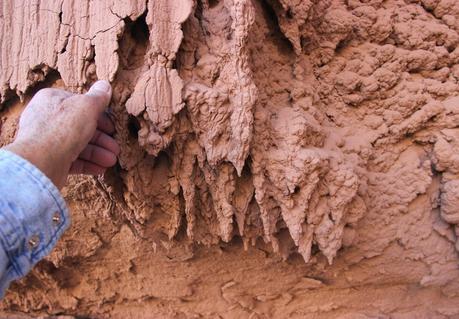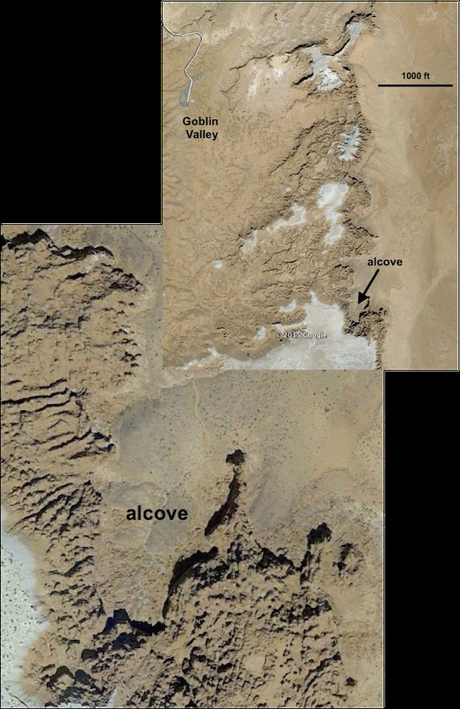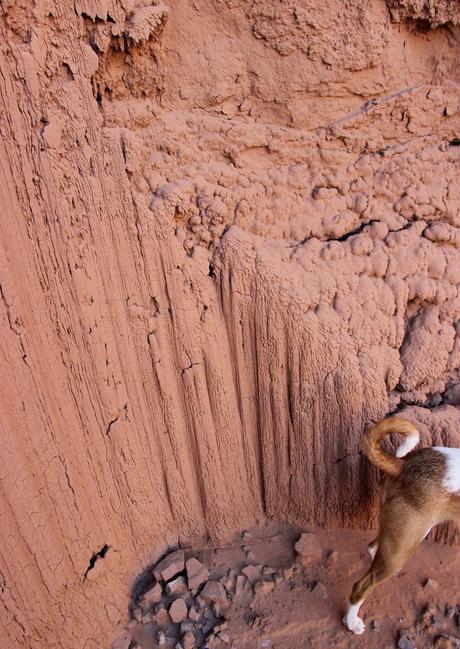
 I found these beautiful and mysterious sculptures in Goblin Valley State Park in southeast Utah, on the opposite side of the main ridge from the goblins.
I found these beautiful and mysterious sculptures in Goblin Valley State Park in southeast Utah, on the opposite side of the main ridge from the goblins.
View from parking lot. Goblins (technically hoodoos) eroded out of the Entrada sandstone – actually a mix of sandstone, siltstone and shale (cliffs in background)

Mid-Jurassic Entrada sandstones, siltstones and shales – once tidal flats and coastal dunes. Pale-colored layer above is the Curtis Formation, also Jurassic.
I took the Goblin’s Lair Trail around to the east side of the ridge (photo above). In a large alcove, I found walls of Entrada sandstone covered with what looked like mud that had run down from above.
My camera had color issues in the shady alcove.


Click on image to view details.


Back at the car, I checked accounts of Goblin Valley State Park in two geology guidebooks. They described depositional and erosional features in the park, both ancient and modern: tidal cross-bedding, remnants of tidal channels, dune cross-bedding, ripple marks, talus, stream-bed ripples, gilgai (popcorn-textured soil), microbiotic crust, intermittent stream channels, and of course hoodoos/goblins. But neither book mentioned mud sculptures on alcove walls.What are they? Are they depositional, erosional, both? All attempts at clever googling have failed. Can you help? If so, please Comment. I seek enlightenment.
